Pausing for a cup of coffee at Emilio, on Avenida Tulum, in the Riviera Maya.


The Riviera Maya is anchored by Cancun in the North and Tulum in the south; the drive of seventy miles takes about one and half-hours. It is an easy drive along the well maintained Federal Highway 307, with a dense wall of dark green jungle that follows the coastline. The jungle also conceals several resorts that are dotted all along the coastline attracting visitors to the clean beaches and translucent aquamarine ocean. This is the Riviera Maya, also known as Mexico’s Caribbean.
Dividing the north and southbound freeway, the medians are planted with indigenous vegetation including an assortment of palms and lovely flowering plants.
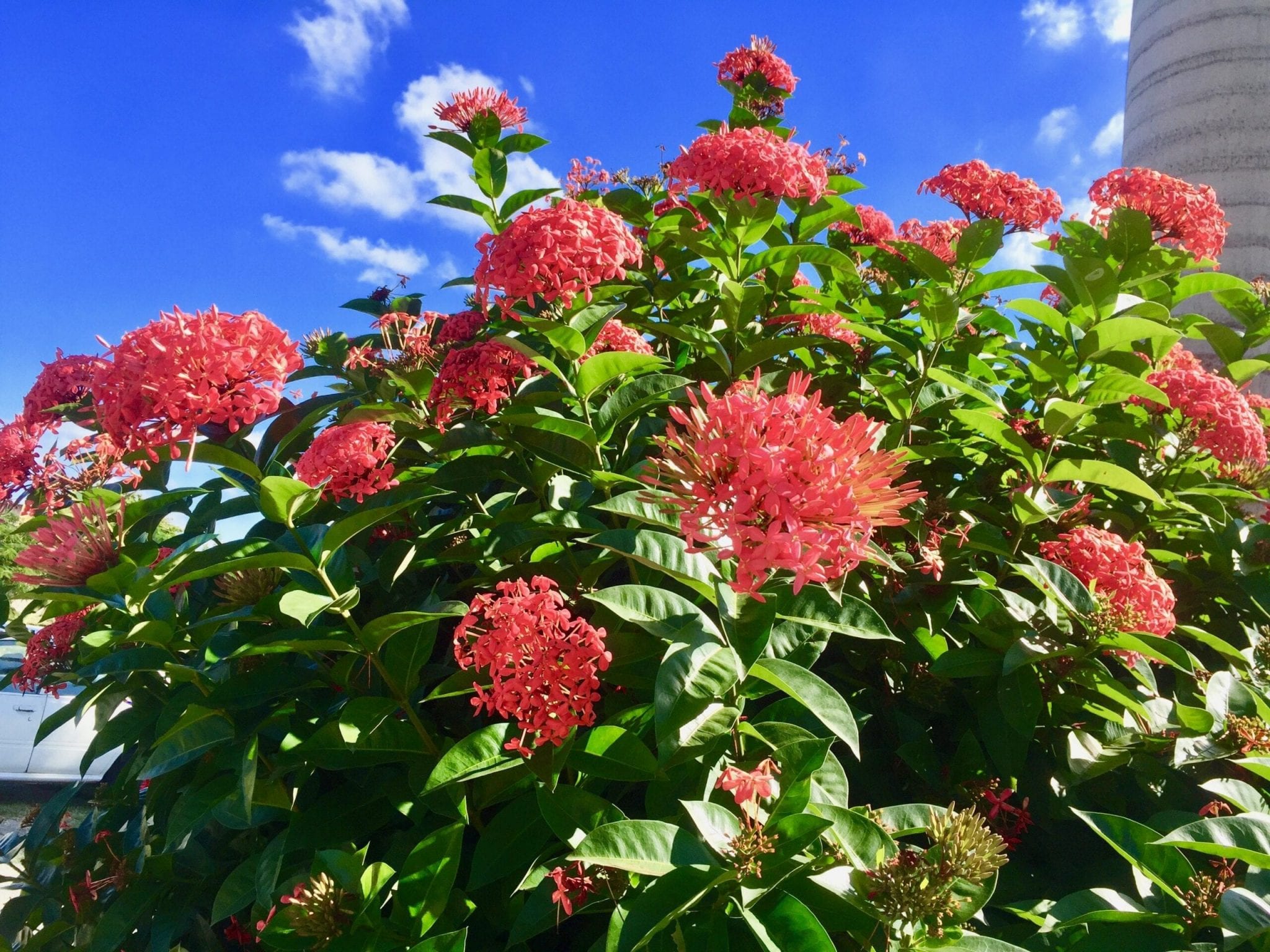

Arriving, there is a break in the forest at Tulum Pueblo, where it was cleared because of the new buildings and crisscrossing road system. Tulum Pueblo is the “original Tulum” and is very different from the beachfront that is far more sophisticated and geared to the tourists seeking nirvana, yoga and … craft cocktails!
Tulum used to be a blip on the freeway until tourism transformed it from a little pueblo into one of the fastest-growing hotspots in Mexico. The main road of Tulum Pueblo was lined with insignificant tiendas, or booths, selling daily essentials; little open-air stands selling fruit and vegetables; hardware stores, interspersed with taco stands; and liquor stores — indistinguishable from any other Mexcian Pueblo before the Path of Progress was paved over it.
No more! As Tulum grew and the beach area became built up, new development gravitated to the Pueblo which changed in character to accommodate the growth and the demands of the Millenials who now frequent Tulum. While some of the original little stores survived, the character has markedly changed. New restaurants have opened, trendy coffee shops are plentiful, there are specialist liquor stores offering mescal tasting, small B&B hotels and yoga studios. Rents have risen sharply which is the main reason the original stores no longer exist; it has become upbeat and trendy.
I had visited here only two years ago but was immediately aware of the change upon my return, even in that short a time. As I was noting new development on Avenida Tulum, the main street, one particular building beckoned to me.


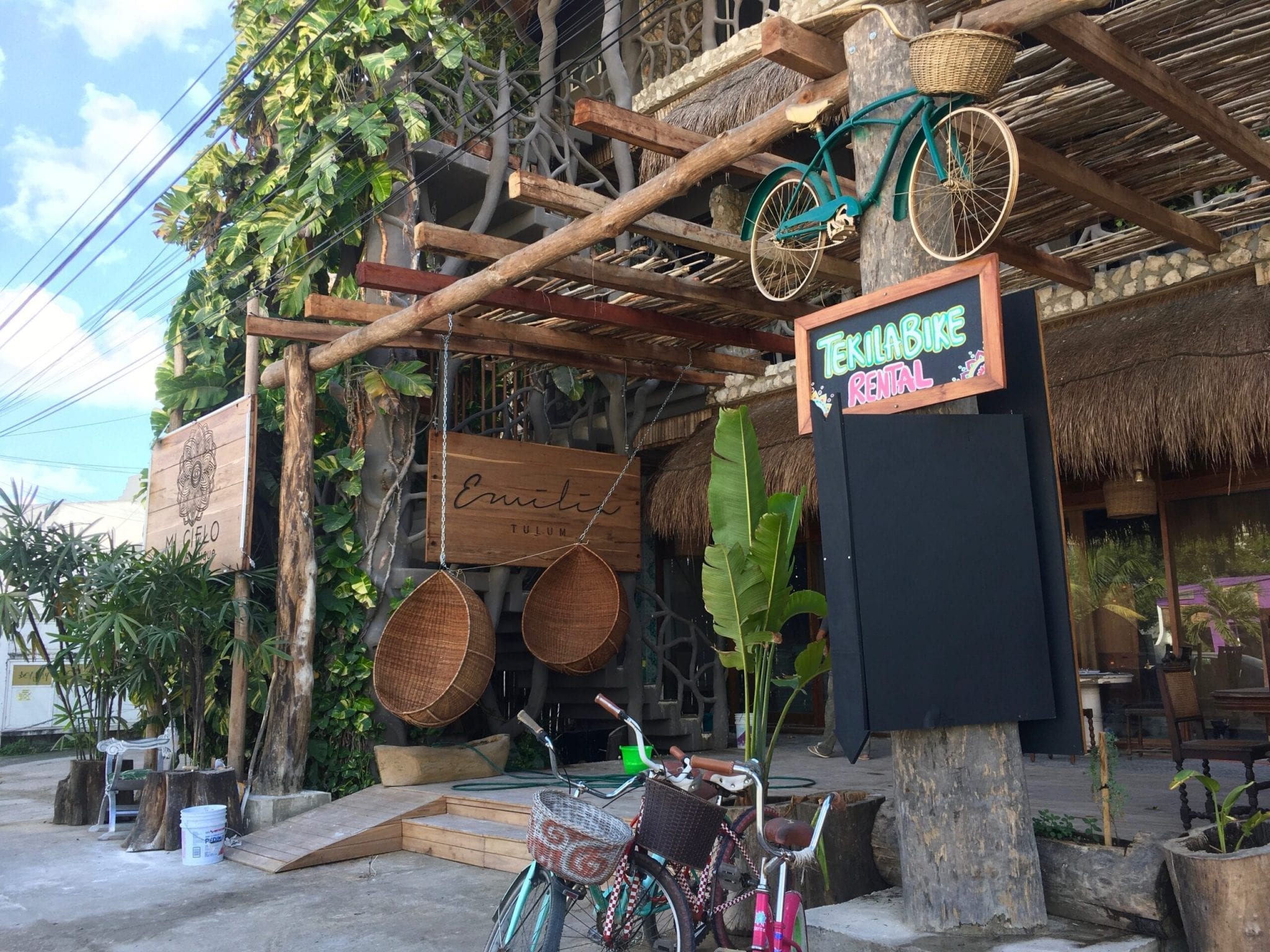
Avenida Tulum is a street that comes to life as the day wears on. It was early, almost no one was out and about, so my gaze was easily attracted by a large handmade wooden sign reading “Emilio” in front of a magnificent open air space with high ceilings. It was predominantly a restaurant, bar and coffee shop with a corner dedicated to an interior designer who also sold tiles, and another space for bike rentals. The choice of tenants was a mishmash, but it was catering to the passing trade.
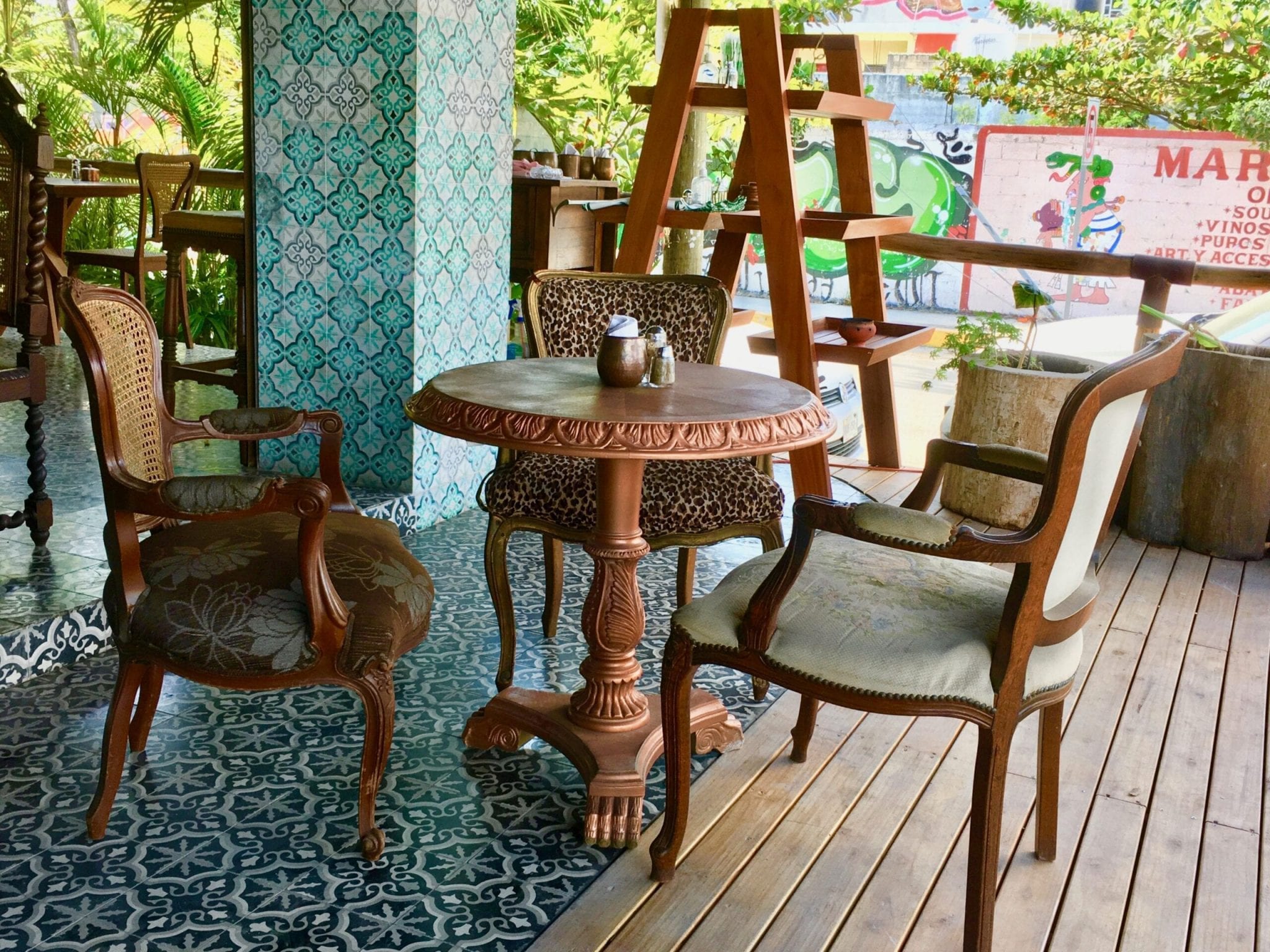

Looking more carefully into the restaurant I became aware there was a connection between the interior design store and the restaurant — the restaurant had become a showroom for the designer. The tiles on the floor and the restored furniture were supplied by the same artisan, who also seemed to be an upholsterer and. a furniture restorer
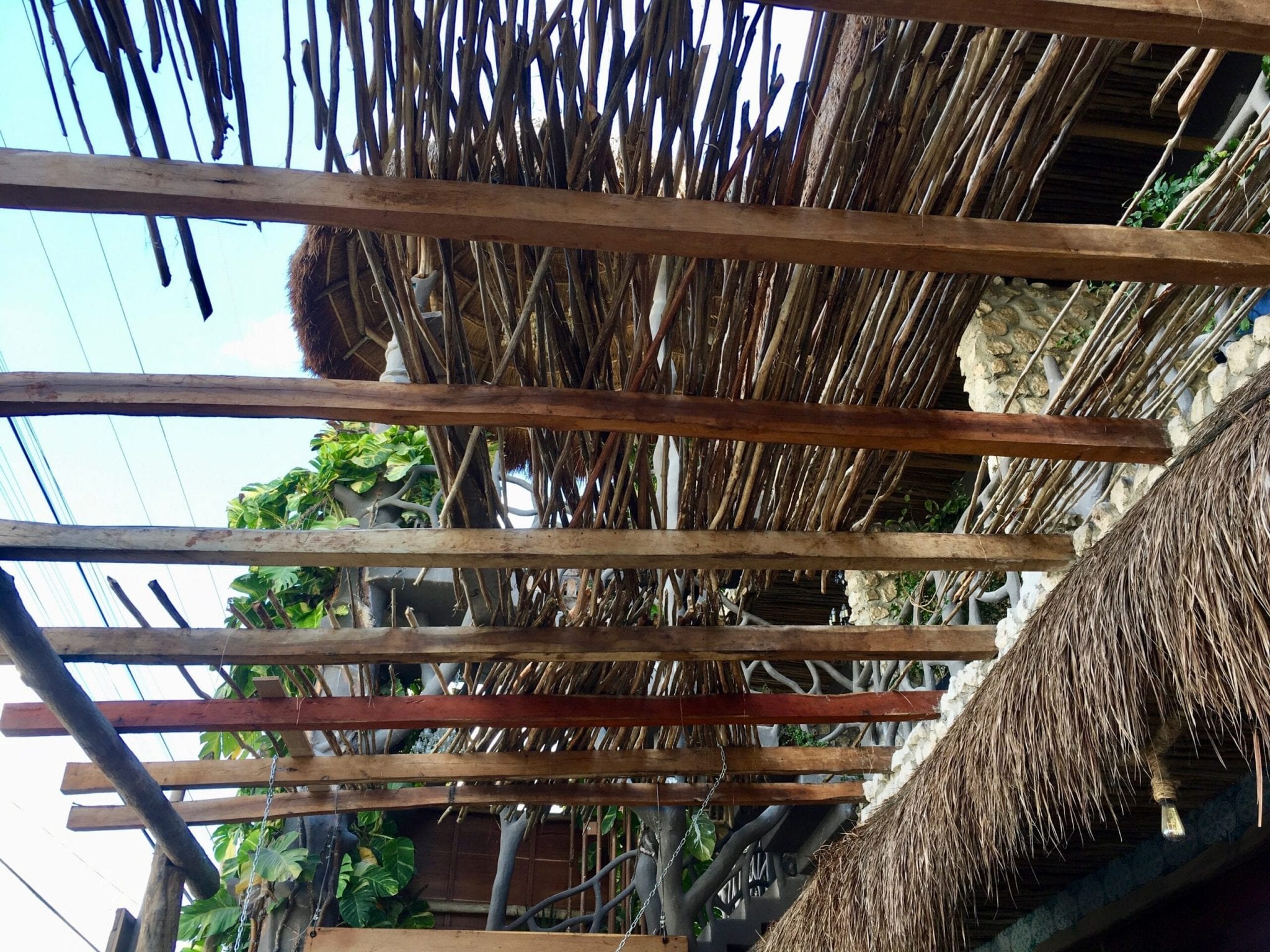

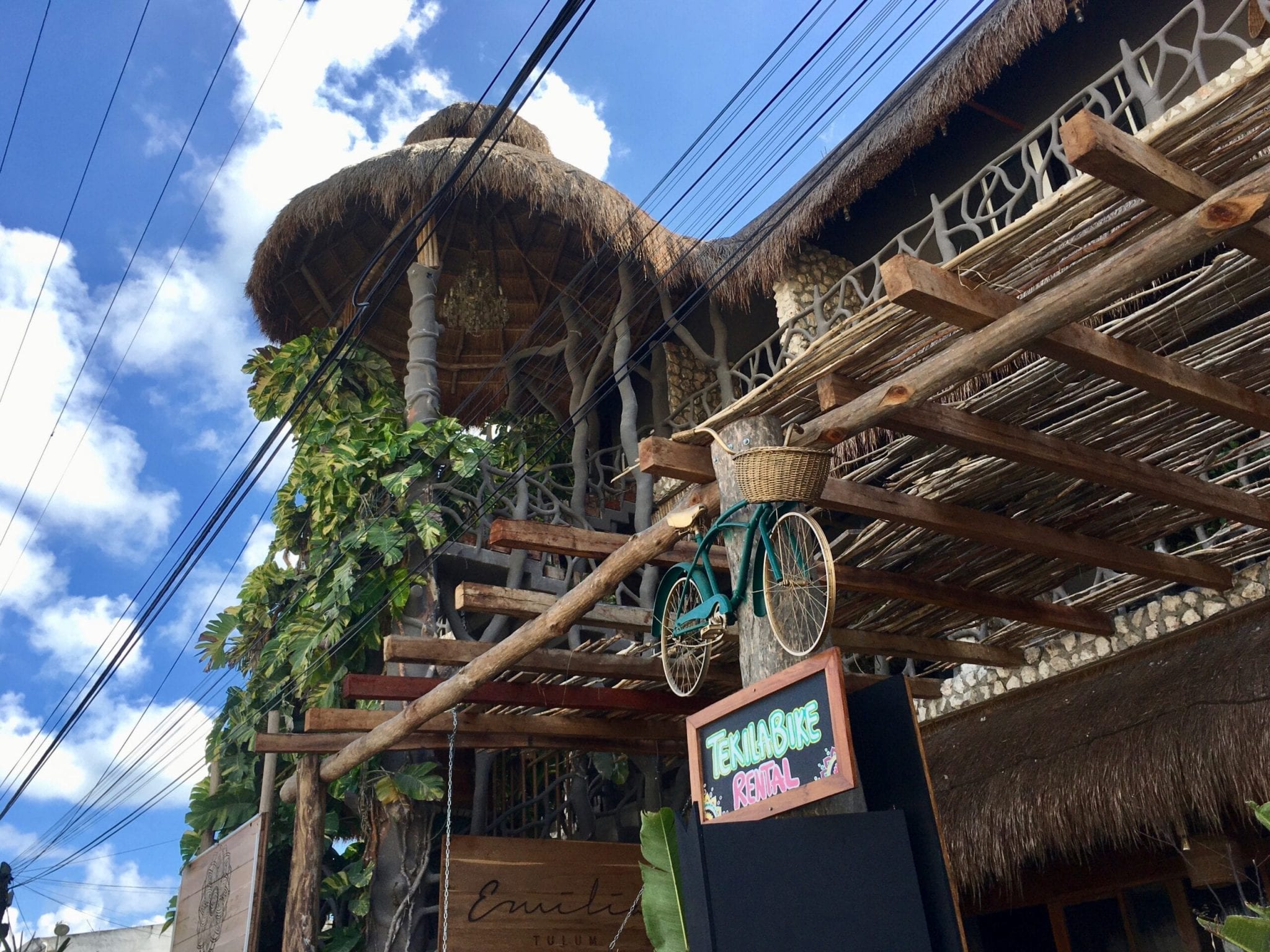
It was the architecture of the building that had me stop in my tracks. The exterior finish was made of organic material from the forest: grasses, tree branches, palm fronds, and rocks that had been repurposed to create a sustainable design. Pothos, a tropical fleshy leafed climbing plant with shiny green and yellow leaves was climbing rampantly up the building’s facade, invading the balcony. The major part of the building was occupied by a hotel and there was another handmade wooden sign with the name “Mi Cielo,”; the restaurant occupied a smaller portion but the organic design existed throughout.

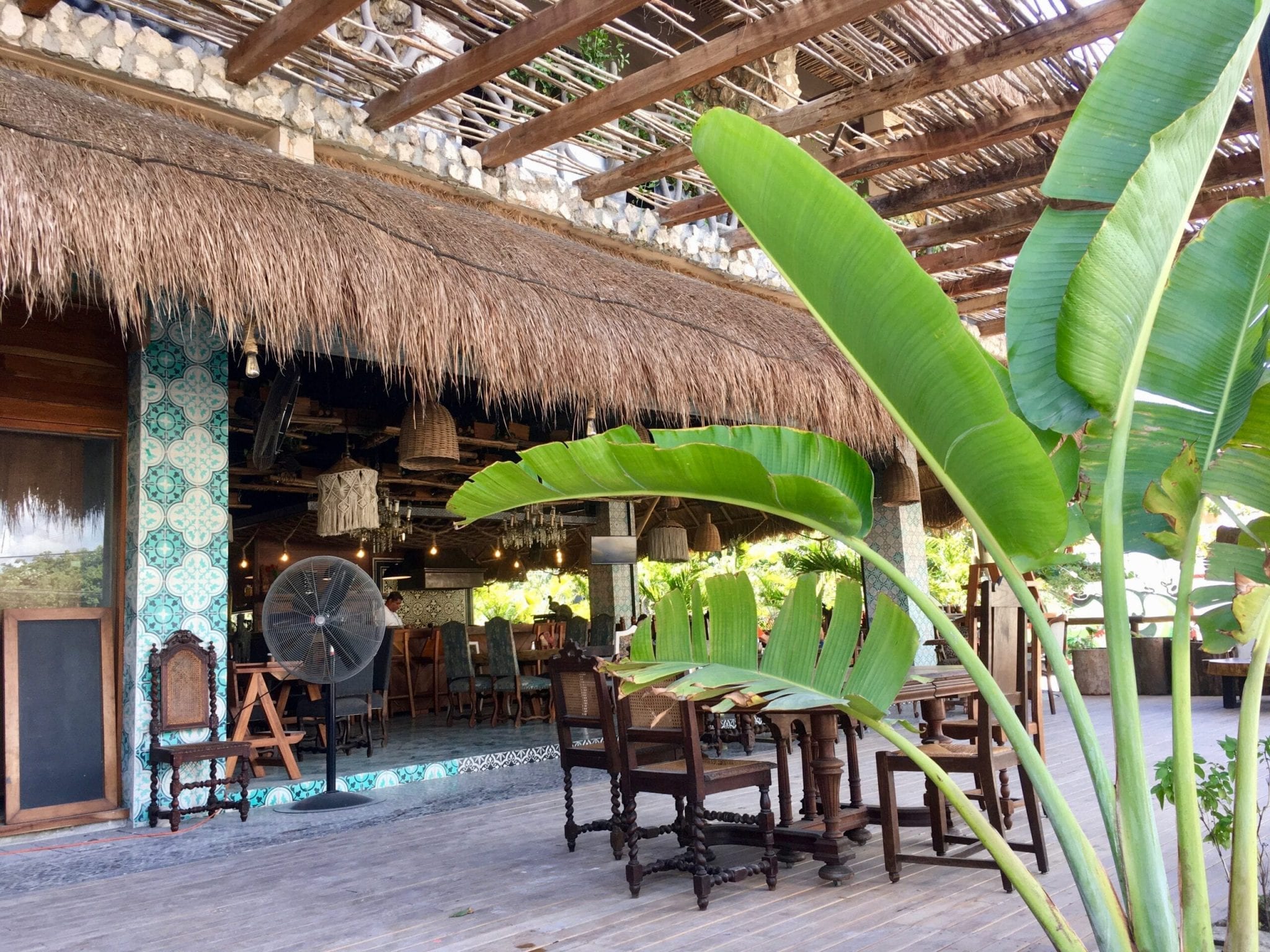

In sharp contrast to the ecodesign, the restaurant was furnished with pseudo-antique European furniture that had been restored and upholstered by the designer. The blending of these two elements was like a shock to the system, it was so unexpected! I will give it a name: Tulum Style — and I do not believe I am the first person to put those two words together.

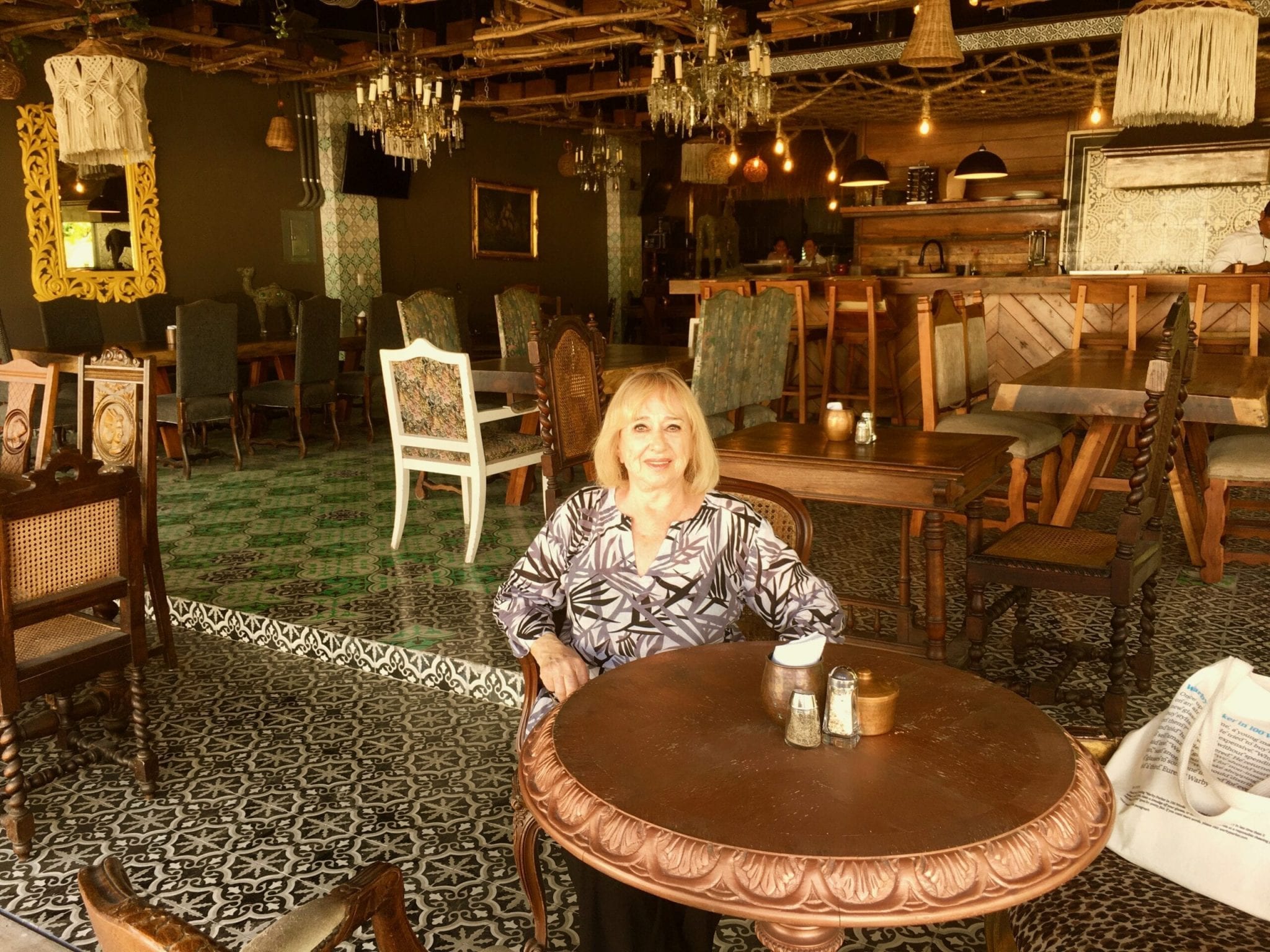
It was time for a shot of caffeine and I made my way inside, finding a comfortable seat on the veranda. Relaxing over a cappuccino, I was able to take it all in — and I loved what they had done, even though it was kitsch and as loud as the music that would be playing when the sun went down and the liquor flowed.
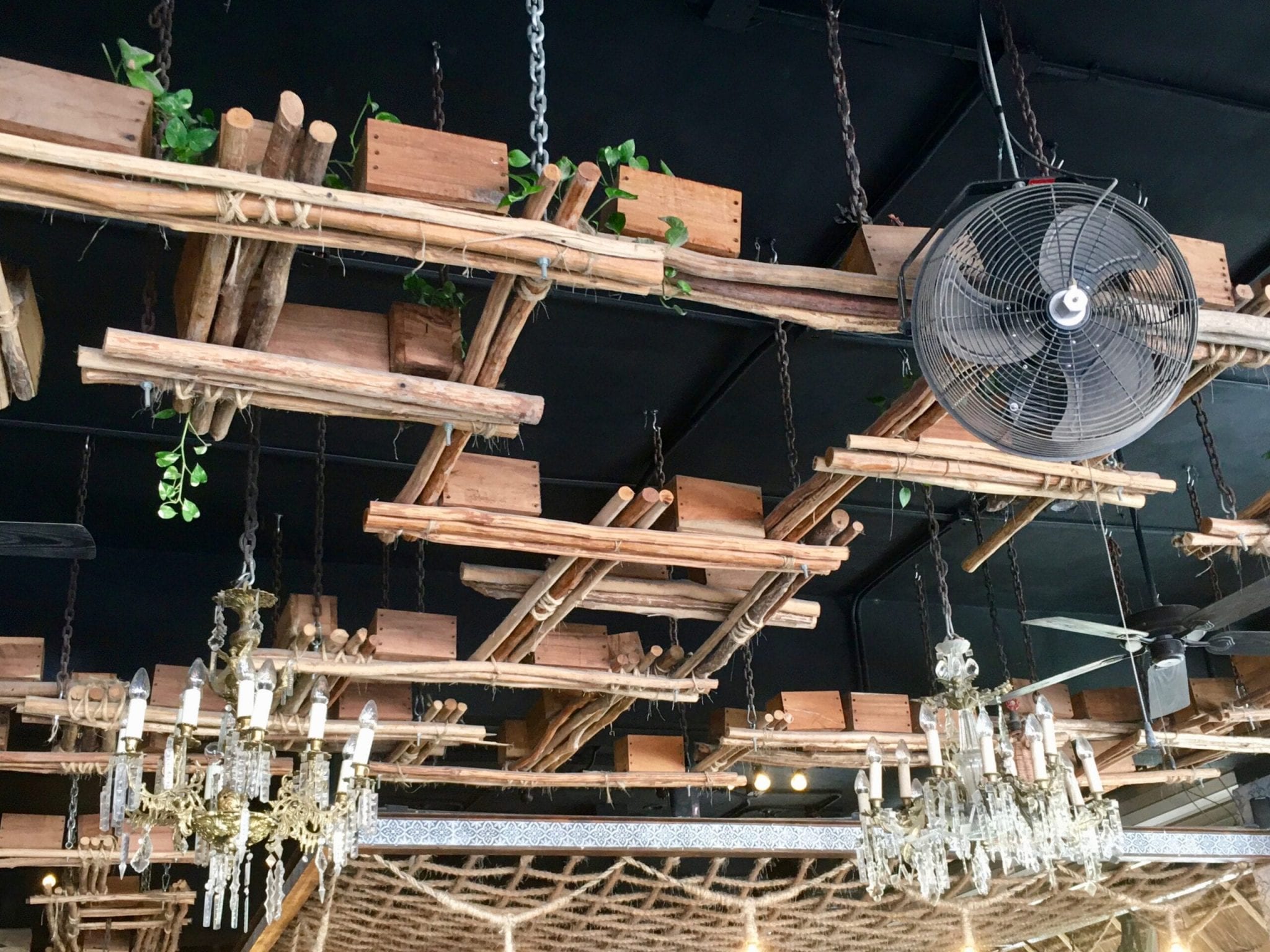

The ceiling was made from bamboo canes, worked into a rectangular design, bound with twine; plant boxes were arranged on top of these. Then came another shock, like ice-cold water thrown in your face — the hanging crystal chandeliers! It may sound discordant but it was visually challenging, the juxtaposition of plant material, grasses, faux antique furniture, and crystal chandeliers.
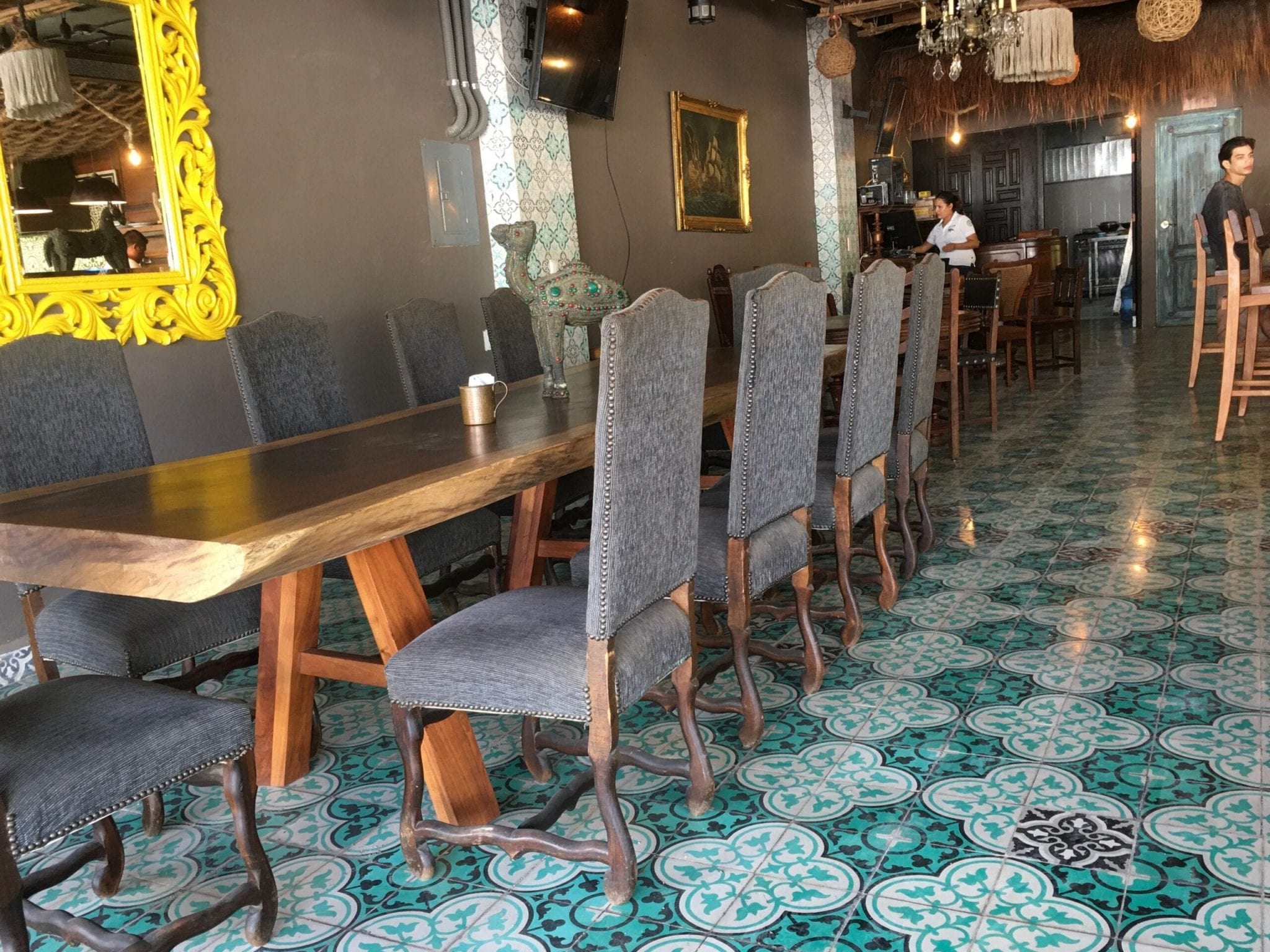
Throughout the restaurant, the furniture was arranged in groupings. Old, but not antique. The chairs had been re-upholstered and some of them painted in bright colors. Different eras were mixed together irreverently, with no particular order. The table in the photograph was made from an enormous piece of wood from the forest that had been worked into a long hand-carved table —to add extra decorative touches, mirror frames were painted over in primary colors.
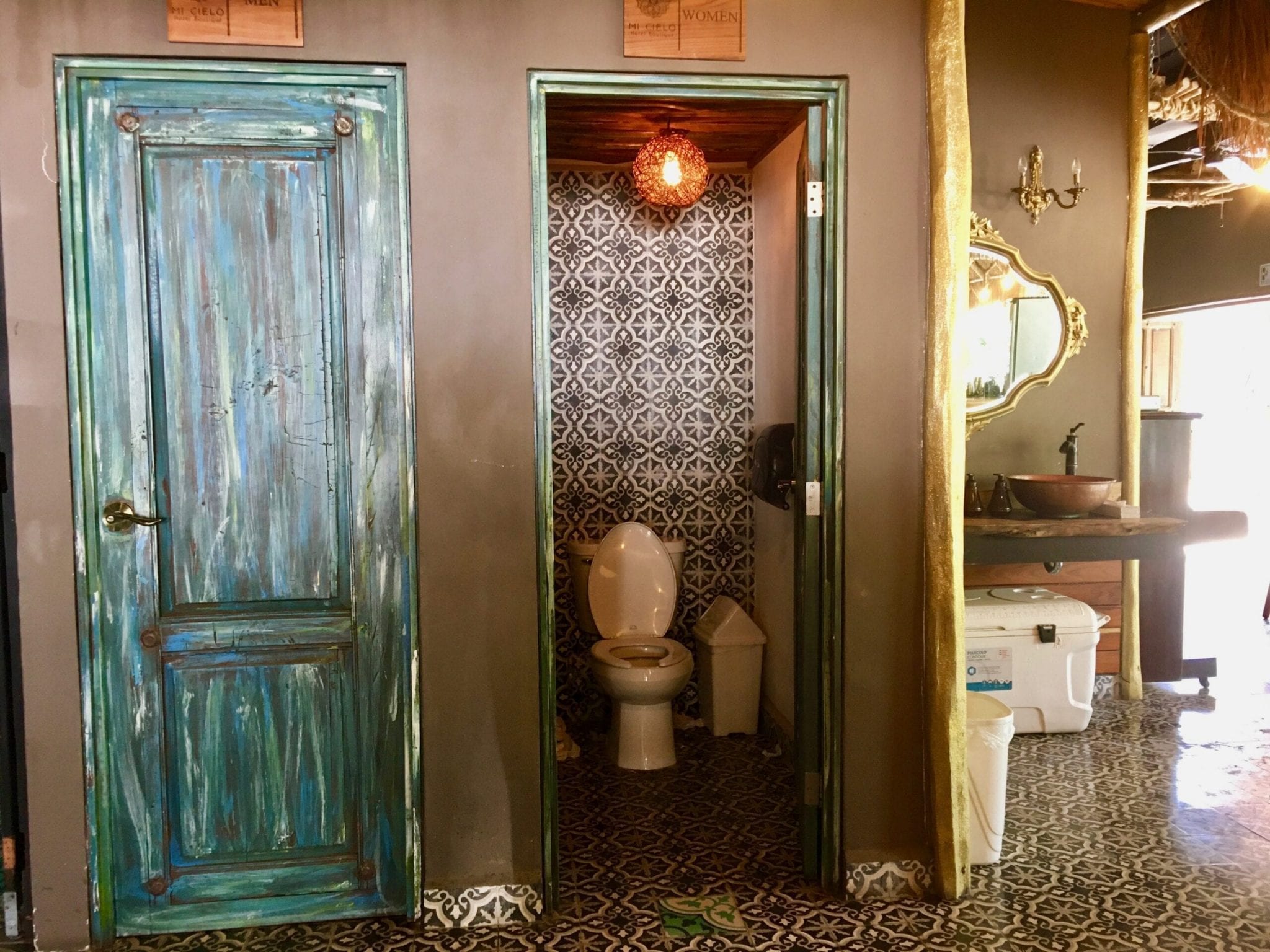
Making use of two dramatic tile designs, (like one was not bold enough!!) these were used both on the floors and walls.


The bathrooms had tiled floors and walls and the doors were handpainted in a faux design. The two washbasins were copper with elaborate faucets and a shiny gold mirror above.
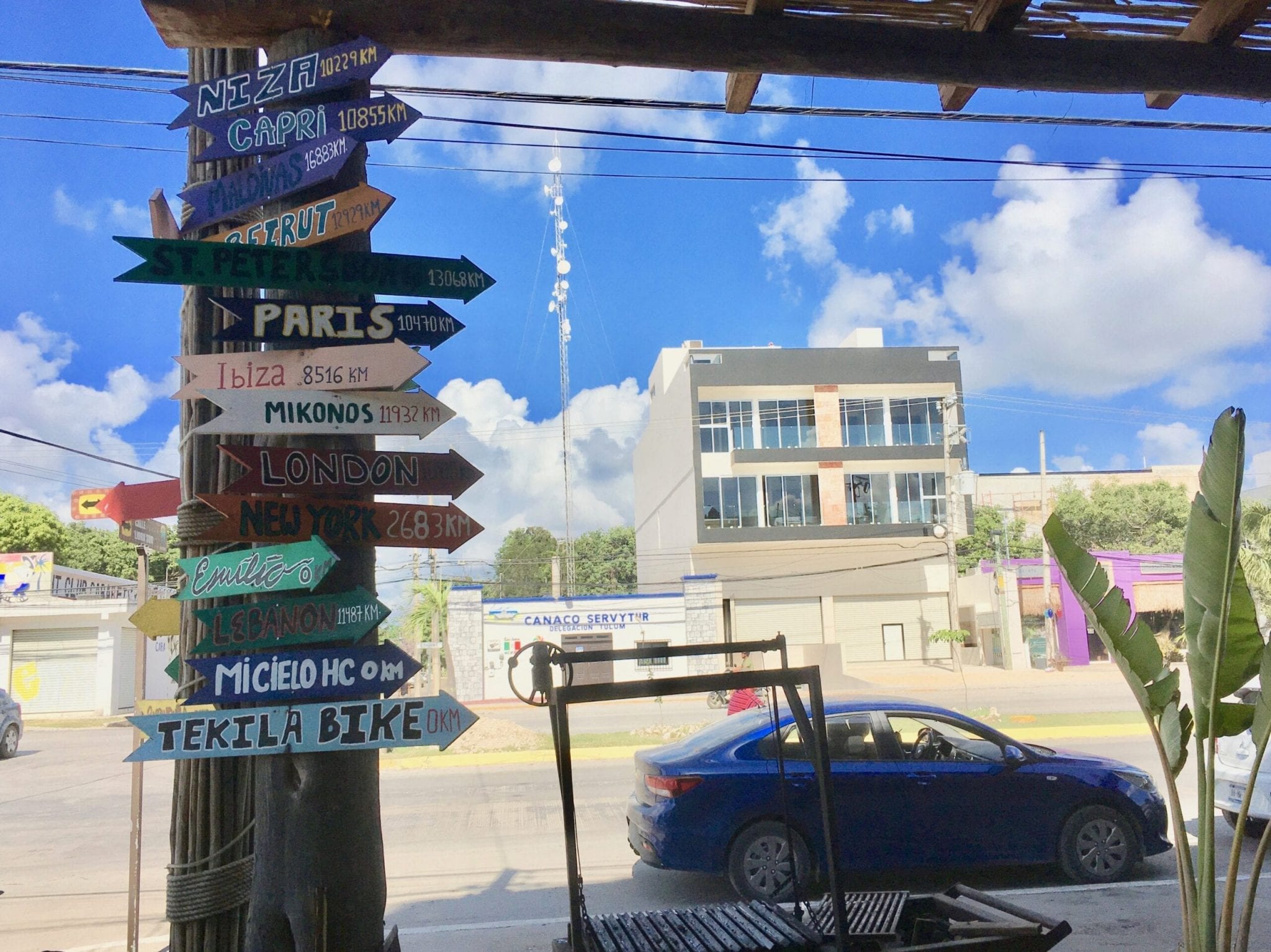
There is much change in Tulum: one could probably produce a coffee table book of before-and-afters only on the few blocks that make up the main street of the “central business district.”
While Avenida Tulum has changed dramatically, I would like to add that a few blocks on either side of it, still looks authentic, even though there are hotels and yoga studios that have invaded this territory, too!
COMMENT.
This town has grown quickly and is continuing to grow rapidly. I wonder, what has happened to sustainability and is the infrastructure adequate? It is wild and uncontrolled, lacking real planning. From mystical magical backpacker outpost, it has become a boomtown with all its problems.
Please, Someone, take responsibility, and guide the development.
And yet it remains very exciting.

